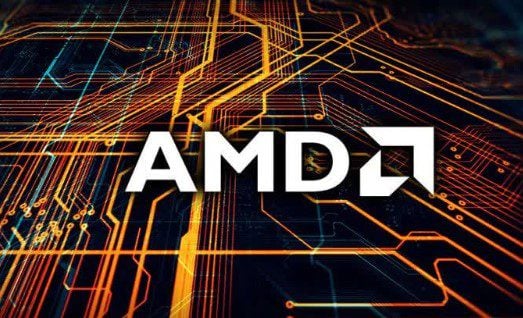In 2022, AMD accomplished market cap history when it finally beat Intel. The market for computer processors has long been dominated by Intel, but AMD has risen to prominence by entering brand-new markets. AMD acquired adaptive chip maker Xilinx in February for $49 billion, making it one of the largest semiconductor purchases in history. These days, AMD CPUs may be found in two Tesla vehicles, the Mars Perseverance lander from NASA, 5G cell towers, and the fastest supercomputer in the world.
A group of eight people founded AMD in 1969, with Jerry Sanders at the helm. One of the key contributors to the field of integrated circuits was Fairchild Semiconductor, where Sanders, known for his vibrant marketing strategies, was previously employed. The cost of chip development has significantly risen over time due to technological progress.

AMD now just designs and tests chips; it has no fabrication facilities. By the 1980s, AMD was one of Intel’s secondary suppliers. AMD reverse-engineered Intel CPUs to create its own devices that were functional with Intel’s ground-breaking x86 software after AMD and Intel split. Intel sued AMD, but a 1995 deal allowed AMD to keep creating x86 chips, lowering the cost of personal computers for customers.
For $5.4 billion, AMD acquired the significant fabless semiconductor maker ATI in 2006. Then, in 2009, AMD completely separated its manufacturing division, becoming GlobalFoundries. GlobalFoundries became publicly listed in 2021 and is still a leading manufacturer of less sophisticated chips used in less complex parts. However, it stopped producing cutting-edge chips in 2018. The most cutting-edge chips from AMD are currently all produced by Taiwan Semiconductor Manufacturing Co. for those purposes.
When it comes to creating the most cutting-edge microprocessors, AMD only has significant competition from two other businesses: Nvidia for GPUs and Intel for CPUs. Although AMD has a far smaller market share than Intel and Nvidia in the respective categories of CPUs and GPUs, it has made significant progress since leaving the manufacturing sector and cutting costs. The Zen series of CPUs from AMD, which debuted in 2017, is frequently credited with the company’s recent success. It’s her favourite product, Su said to CNBC. Analysts claim that it also prevented AMD from going bankrupt.

AMD’s EPYC line of CPUs made enormous strides in the data center market. This month’s newest, Genoa, was released. Oracle, Google Cloud, AWS, IBM, and Microsoft Azure are a few of AMD’s data center clients. Between 2017 and 2021, AMD’s revenue increased by more than threefold, from 5.3 billion USD to over 16 billion USD.
During that period, Intel’s annual sales climbed by around 25%, rising from roughly $63 billion in 2017 to $79 billion in 2018. Many praise Su, who became CEO in 2014, with AMD’s success in catching up to Intel’s technological advancements. Since then, AMD’s staff base has more than tripled. Su received three of the highest awards in the semiconductor business and was ranked as Fortune’s #2 Business Person of the Year in 2020.

She also acts on President Joe Biden’s Council of Advisors on Science and Technology, which worked tirelessly to enact the CHIPS Act recently. It sets aside $52 billion for American businesses to produce chips domestically rather than elsewhere. The chip scarcity emphasized the issues of offshore dependence, particularly in light of the ongoing hostility between Taiwan and China.
All of the most cutting-edge semiconductors in the world are currently produced in Asia. The Biden administration just imposed significant new export restrictions on semiconductors to China. About 3,000 AMD personnel work there, and 25% of its revenues last year went to China. Su claims that the revenue impact was minor.
FAQs








